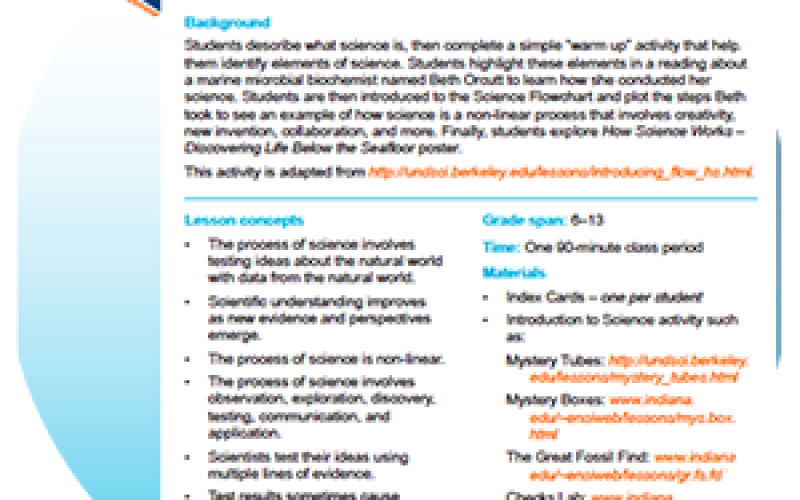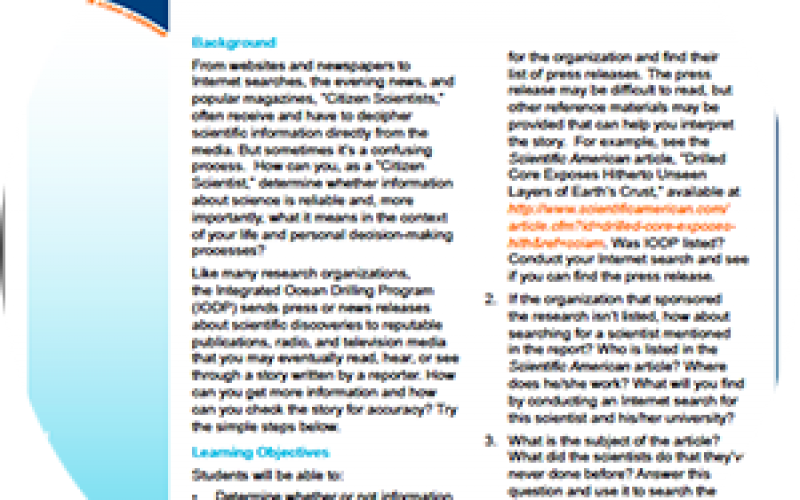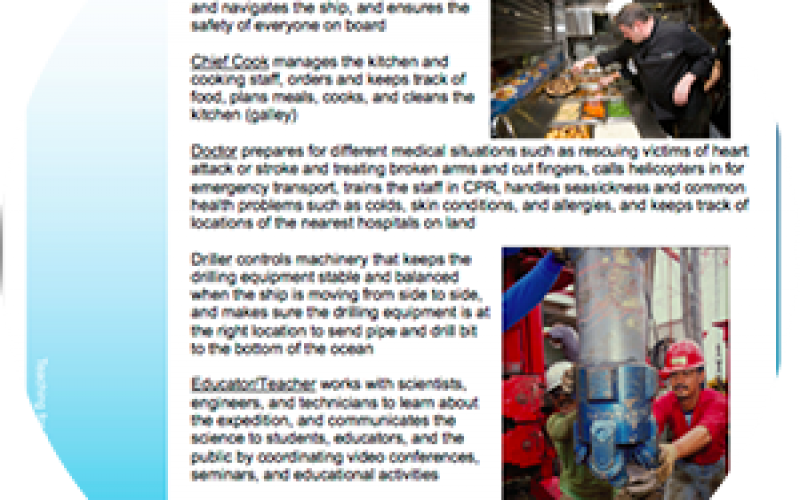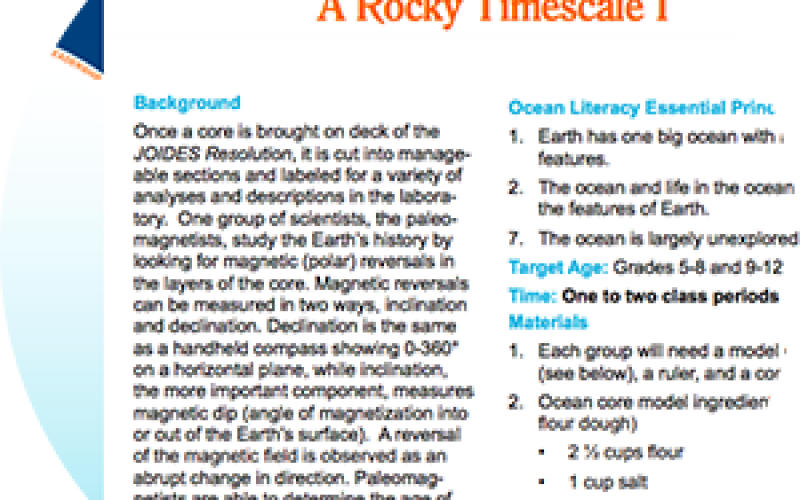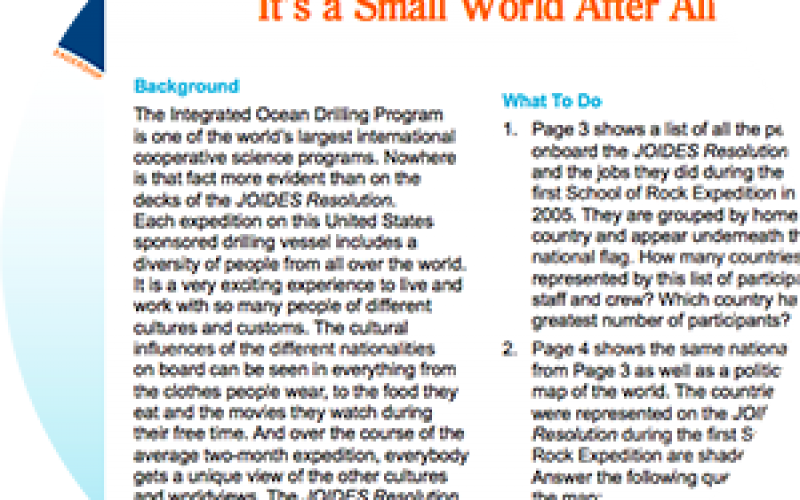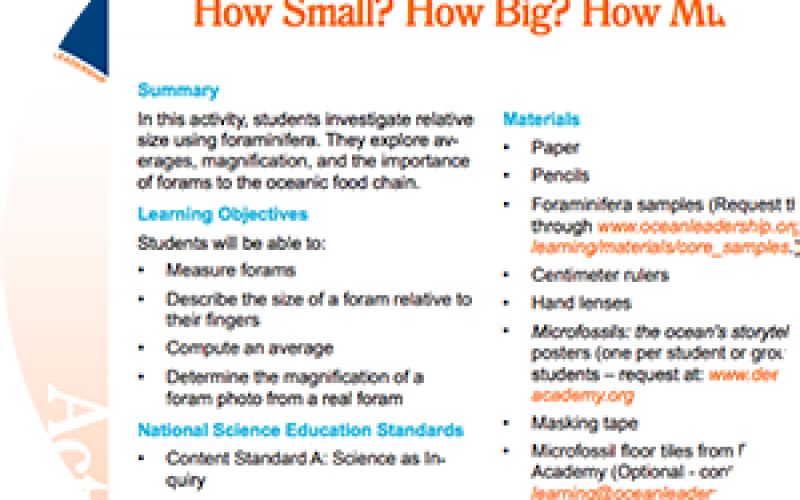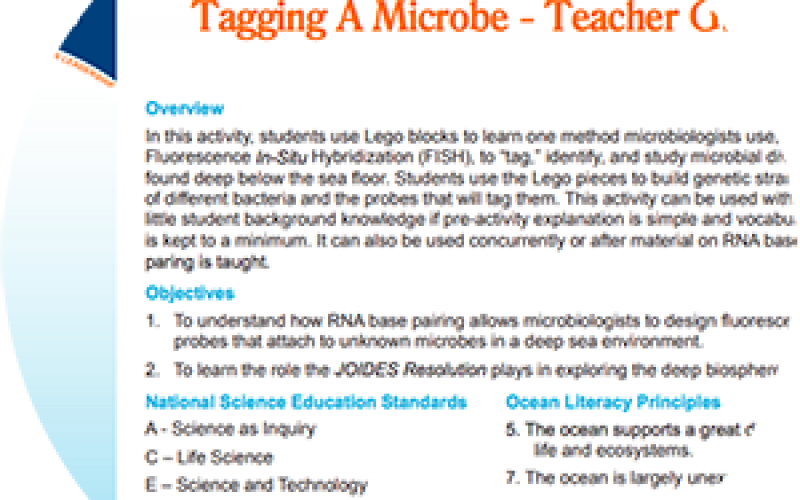Discovering Life Below the Sea Floor
Students highlight these elements in a reading about a marine microbial biochemist named Beth Orcutt to learn how she conducted her science. Students are then introduced to the Science Flowchart and plot the steps Beth took to see an example of how science is a non-linear process that involves creativity, new invention, collaboration, and more.
Citizen Scientists and Decision Making
From websites and newspapers to Internet searches, the evening news, and popular magazines, “Citizen Scientists,” often receive and have to decipher scientific information directly from the media. But sometimes it’s a confusing process.
Careers at Sea Conducting Science on the JOIDES Resolution
In this activity students explore the diversity of careers aboard an ocean research vessel called the JOIDES Resolution to learn how the skills and expertise of each individual and the teamwork of the group are essential to the success of the science. Students read brief descriptions about the many jobs represented on the ship, then choose one job of interest.
A Rocky Timescale
Once a core is brought on deck of the JOIDES Resolution, it is cut into manageable sections and labeled for a variety of analyses and descriptions in the laboratory. One group of scientists, the paleomagnetists, study the Earth’s history by looking for magnetic (polar) reversals in the layers of the core. Magnetic reversals can be measured in two ways, inclination and declination.
It’s a Small World After All
The Integrated Ocean Drilling Program is one of the world’s largest international cooperative science programs. Nowhere is that fact more evident than on the decks of the JOIDES Resolution. Each expedition on this United States sponsored drilling vessel includes a diversity of people from all over the world.
How Small? How Big? How Much?
Using the Microfossils: the ocean’s storytellers poster, this lesson will help students understand the size of microfossils found in core…
Tagging a Microbe
In this activity, students use Lego blocks to learn one method microbiologists use, called Fluorescence In-Situ Hybridization (FISH), to “tag,” identify, and study microbial diversity found deep below the sea floor. Students use the Lego pieces to build genetic strands of different bacteria and the probes that will tag them.

